A non-canonical ESCRT pathway, including histidine domain phosphotyrosine phosphatase (HD-PTP), is used for down-regulation of virally ubiquitinated MHC class I
- PMID: 26221024
- PMCID: PMC4613529
- DOI: 10.1042/BJ20150336
A non-canonical ESCRT pathway, including histidine domain phosphotyrosine phosphatase (HD-PTP), is used for down-regulation of virally ubiquitinated MHC class I
Abstract
The Kaposi's sarcoma-associated herpes virus (KSHV) K3 viral gene product effectively down-regulates cell surface MHC class I. K3 is an E3 ubiquitin ligase that promotes Lys(63)-linked polyubiquitination of MHC class I, providing the signal for clathrin-mediated endocytosis. Endocytosis is followed by sorting into the intralumenal vesicles (ILVs) of multivesicular bodies (MVBs) and eventual delivery to lysosomes. The sorting of MHC class I into MVBs requires many individual proteins of the four endosomal sorting complexes required for transport (ESCRTs). In HeLa cells expressing the KSHV K3 ubiquitin ligase, the effect of RNAi-mediated depletion of individual proteins of the ESCRT-0 and ESCRT-I complexes and three ESCRT-III proteins showed that these are required to down-regulate MHC class I. However, depletion of proteins of the ESCRT-II complex or of the ESCRT-III protein, VPS20 (vacuolar protein sorting 20)/CHMP6 (charged MVB protein 6), failed to prevent the loss of MHC class I from the cell surface. Depletion of histidine domain phosphotyrosine phosphatase (HD-PTP) resulted in an increase in the cell surface concentration of MHC class I in HeLa cells expressing the KSHV K3 ubiquitin ligase. Rescue experiments with wild-type (WT) and mutant HD-PTP supported the conclusion that HD-PTP acts as an alternative to ESCRT-II and VPS20/CHMP6 as a link between the ESCRT-I and those ESCRT-III protein(s) necessary for ILV formation. Thus, the down-regulation of cell surface MHC class I, polyubiquitinated by the KSHV K3 ubiquitin ligase, does not employ the canonical ESCRT pathway, but instead utilizes an alternative pathway in which HD-PTP replaces ESCRT-II and VPS20/CHMP6.
Keywords: endocytosis; endosomal sorting complex required for transport (ESCRT); histidine domain phosphotyrosine phosphatase (HD-PTP); histidine-domain protein tyrosine phosphatase non-receptor type 23 (PTPN23); lysosome; ubiquitination (ubiquitylation).
© 2015 Authors.
Figures
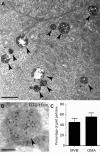
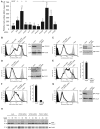
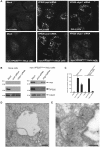
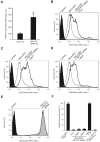
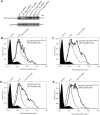
Similar articles
-
ESCRT proteins and the regulation of endocytic delivery to lysosomes.Biochem Soc Trans. 2009 Feb;37(Pt 1):178-80. doi: 10.1042/BST0370178. Biochem Soc Trans. 2009. PMID: 19143626
-
Recruitment of UBPY and ESCRT exchange drive HD-PTP-dependent sorting of EGFR to the MVB.Curr Biol. 2013 Mar 18;23(6):453-61. doi: 10.1016/j.cub.2013.02.033. Epub 2013 Mar 7. Curr Biol. 2013. PMID: 23477725
-
The ESCRT-II Subunit EAP20/VPS25 and the Bro1 Domain Proteins HD-PTP and BROX Are Individually Dispensable for Herpes Simplex Virus 1 Replication.J Virol. 2020 Jan 31;94(4):e01641-19. doi: 10.1128/JVI.01641-19. Print 2020 Jan 31. J Virol. 2020. PMID: 31748394 Free PMC article.
-
ESCRT-III on endosomes: new functions, new activation pathway.Biochem J. 2016 Jan 15;473(2):e5-8. doi: 10.1042/BJ20151115. Biochem J. 2016. PMID: 26733719 Review.
-
Dissecting the role of His domain protein tyrosine phosphatase/PTPN23 and ESCRTs in sorting activated epidermal growth factor receptor to the multivesicular body.Biochem Soc Trans. 2018 Oct 19;46(5):1037-1046. doi: 10.1042/BST20170443. Epub 2018 Sep 6. Biochem Soc Trans. 2018. PMID: 30190330 Free PMC article. Review.
Cited by
-
Structural Basis for Specific Interaction of TGFβ Signaling Regulators SARA/Endofin with HD-PTP.Structure. 2017 Jul 5;25(7):1011-1024.e4. doi: 10.1016/j.str.2017.05.005. Epub 2017 Jun 8. Structure. 2017. PMID: 28602823 Free PMC article.
-
Structural Basis for Selective Interaction between the ESCRT Regulator HD-PTP and UBAP1.Structure. 2016 Dec 6;24(12):2115-2126. doi: 10.1016/j.str.2016.10.006. Epub 2016 Nov 10. Structure. 2016. PMID: 27839950 Free PMC article.
-
Organelle tethering, pore formation and SNARE compensation in the late endocytic pathway.J Cell Sci. 2021 May 15;134(10):jcs255463. doi: 10.1242/jcs.255463. Epub 2021 May 27. J Cell Sci. 2021. PMID: 34042162 Free PMC article.
-
Life in the lumen: The multivesicular endosome.Traffic. 2020 Jan;21(1):76-93. doi: 10.1111/tra.12715. Traffic. 2020. PMID: 31854087 Free PMC article. Review.
-
ESCRT-dependent control of membrane remodelling during cell division.Semin Cell Dev Biol. 2018 Feb;74:50-65. doi: 10.1016/j.semcdb.2017.08.035. Epub 2017 Aug 24. Semin Cell Dev Biol. 2018. PMID: 28843980 Free PMC article. Review.
References
-
- Burr M.L., van den Boomen D.J., Bye H., Antrobus R., Wiertz E.J., Lehner P.J. MHC class I molecules are preferentially ubiquitinated on endoplasmic reticulum luminal residues during HRD1 ubiquitin E3 ligase-mediated dislocation. Proc. Natl. Acad. Sci. U.S.A. 2013;110:14290–14295. doi: 10.1073/pnas.1303380110. - DOI - PMC - PubMed
Publication types
MeSH terms
Substances
Grants and funding
LinkOut - more resources
Full Text Sources
Research Materials
Miscellaneous

